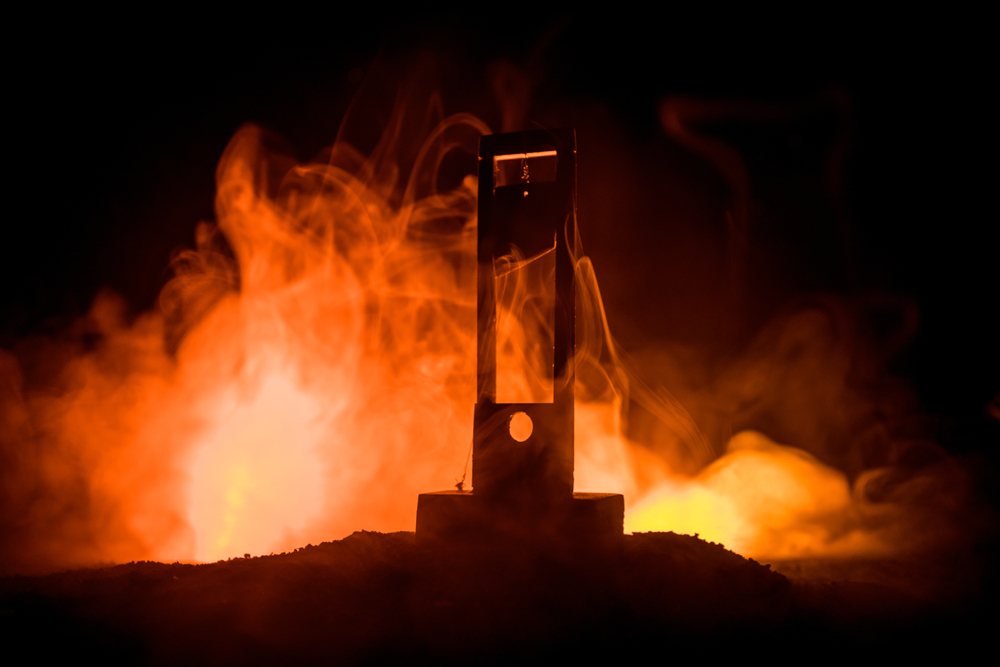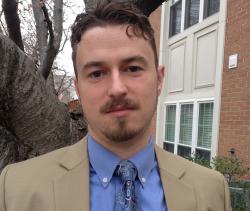More than a decade ago, I had the privilege of visiting Tuol Sleng, a museum in Phnom Penh, Cambodia, that displays in horrific detail the murderous brutality committed by the totalitarian Khmer Rouge, which governed the country from 1975 to 1979. Originally a school, Tuol Sleng was turned into a prison housing more than 18,000 “enemies of the state,” almost all of whom were murdered. Visitors to the museum today will see walls covered with photos of deceased inmates, cabinets filled with human skulls, and testimonials of those who survived. I remember one inmate describing how the daily ration was so meager that the prisoners could practically count the individual grains of rice. The next time you eat rice, you’ll recognize how little that is.
Scholars estimate that the Khmer Rouge was responsible for the deaths of somewhere between 1.5 and 2 million people out of a population of about 6.5 million. Many of the victims died because of starvation, forcibly removed from their homes to work on massive (and largely pointless) agricultural projects. But the regime also targeted those associated with the previous government, ethnic and religious minorities, and the intelligentsia. Simply wearing glasses—a supposed sign of being educated, and thus a threat—could be a death sentence.
As Valparaiso University professor Thomas Albert Howard notes in his new book, Broken Altars: Secularist Violence in Modern History, the Khmer Rouge was a virulently secular regime. Its foot soldiers targeted not only the small Catholic population that owed its existence to French missionaries during the colonial period but also representatives of the Buddhist majority and the Cham Muslim minority population. Of a pre–Khmer Rouge Buddhist monk population of 65,000, only 2,000 were alive in 1979. Mortality rates among Protestants and Catholics in Cambodia during this time was likely close to 1 in 2. The Khmer Rouge also systematically exterminated Cham villages—almost a third of this religious minority died.
The anti-religious character of the Khmer Rouge regime is important, Howard argues, because in both academia and popular media, it is often an a priori assumption that it is religion and violence that go hand in hand. There is a Journal of Religion and Violence and academic texts such as the Blackwell Companion to Religion and Violence and the Oxford Handbook of Religion and Violence. Millions of Americans believe our nation is terrifyingly close to realizing the dystopian religious authoritarianism of Margaret Atwood’s The Handmaid’s Tale. “For many educated Westerners,” Howard observes, “ the idea that religion promotes violence and secularism ameliorates the problem is a settled certainty, a doxa, an unstated premise of right thinking.” Yet, he further notes, if we are talking about numbers, the death and destruction exacted upon religious communities by secularist governments in the 20th century far exceeds the violence committed by premodern or early modern European confessional states.
But Howard’s argument moves far beyond the typical talking point (however accurate) that the anti-Christian regimes of Hitler, Stalin, Mao, and Pol Pot were responsible for the deaths of tens of millions of people. Indeed, the professor of humanities and history begins by differentiating three different manifestations of secularism that are visible in modern political institutions: passive secularism, combative secularism, and eliminationist secularism.
Passive secularism describes those regimes that, although intentionally secular, are not hostile to religion. In this category, Howard places the United States and the 1831 constitution of Belgium. Though I understand what Howard is trying to describe, I think his presentation is a bit simplistic, for reasons I outlined in a review for Religion & Liberty. Even if the framers of the U.S. Constitution did not craft a confessional state, they certainly created one that was demonstrably preferential toward religion, given that religion is protected in the First Amendment and that God is explicitly cited in the Declaration as knowable by nature. Churches enjoy tax exemptions, and chaplains are employed by Congress, legislatures, the military services, and public institutions. Presidents (such as Washington and Lincoln) proclaimed public religious festivals or fast days. We have judicial oaths and (once had) Sabbath laws. That doesn’t sound like a disinterested approach to religious faith and practice, even if some of these traditions have of late receded.
Howard is on firmer ground when it comes to the other two forms of secularism. Combative secularism embodies those regimes that aimed to fight, defeat, and marginalize religious institutions. The French Revolution, for example, took as one of its rallying cries Voltaire’s “Écrasez l’infâme” (“crush the loathsome thing”), closing or destroying churches and monasteries, jettisoning the Christian calendar, and killing clergy. Although citizens might still be free to worship within the privacy of their own homes, this project intends to weaken dramatically the public witness and image of organized religion. Eliminationist secularism takes this one step further, aiming to destroy religion, not only in the public square, but in the very hearts and souls of men. It takes as its inspiration the thought of such men as Marx, Engels, and Lenin.
Obviously, combative and eliminationist secularists have quite a bit in common, given, as Howard argues, that they both descend from the progressive wing of the Enlightenment. “Men will never be free until the last king is strangled with the entrails of the last priest,” asserted Diderot. What is most important for Howard’s thesis, however, is that both quite clearly prove that secularism, far from transcending sectarianism and violence, is responsible for some of the most heinous, murderous regimes this planet has ever witnessed. Indeed, though many of its adherents argue that secularism is objective and indifferent, it “carries normative assumptions and frames of reference” that evince its own peculiar paradigm.
~ ~ ~
Secularists, as much as they present themselves as epitomizing neutrality, still must engage in the complex process of making moral judgements based on philosophical criteria. On this, Howard’s analysis is especially strong. He notes that secular humanism designates the national state, rather than the church (or synagogue, mosque, or temple), as the “locus of individual and communal action,” which inevitably acts as a centralizing force. It also makes the “immanent collective,” rather than the individual person as created in the image of God, as “the paramount focus of social thought and moral reasoning.” In addition, equality assumes a preeminent and absolute role in secularist thinking in a manner disconsonant with thousands of years of human civilization that recognized (rightly or wrongly) various hierarchies: religious over laity, men over women, older over younger, etc. None of these assumptions are per se neutral.
The first extended example of Howard’s story is that of France, though not the violent 18th-century radical purge of Catholicism from the Church’s “eldest daughter,” as the country was once known. Rather, it is the combative secularism manifested in the systemic extirpation of Catholicism from France’s public life, including the abolition of “Sunday rest” restrictions, removal of religious iconography from public places, banning of religious processions, and renaming of streets that had saints’ names. The secular French state then targeted Catholic education and religious orders, suppressing hundreds of religious houses and sending thousands of religious into exile. The state seized churches and religious buildings.
From there, we read of Mexico, Spain, and Turkey. Anti-Catholic secularists in Mexico in the 1920s and 1930s targeted the Church, its representatives, and the faithful, often violently. Before the Cristero War—a Catholic uprising in several Mexican provinces that sought to preserve their faith—there were about 4,500 priests; after the conflict’s end, there were only 334, as the rest had emigrated or been expelled or assassinated. The violence in Spain during its civil war of 1936 to 1939 was even more terrible: 13 bishops, 4,172 diocesan priests and seminarians, 2,364 monks, and 283 nuns were killed, while many churches were burned to the ground. And the Turkish regime, which became secularist under Mustafa Kemal Atatürk after World War I, targeted devout Muslims, particularly among ethnic minority communities such as the Kurds.
But even these numbers pale in comparison to those accumulated in the Soviet Union, which at various points in its history sought to destroy all religious sects. In the early 1920s alone, about 8,000 Orthodox priests, monks, and nuns perished by violent means, and 28 bishops were murdered. Another 35,000 Orthodox priests were executed or imprisoned in the 1930s. Innumerable churches were destroyed or turned into secular buildings. Catholicism, which in 1918 had almost 900 priests operating in Soviet territories, practically ceased to exist by 1940. The number of mosques in the Soviet Union had decreased from about 20,000 in 1917 to fewer than 4,000 by 1935. Hundreds of synagogues and Jewish religious schools met the same fate, while 15,000 Buddhist lamas were deported in the 1930s.
“Red Asia,” the Bolshevik Mongolian regime that came to power in the 1920s, aggressively suppressed Buddhists, reducing the number of lamas in monasteries from 82,000 to fewer than 600 between September 1937 and July 1938. In communist China, Catholic bishops were martyred, and most Christian churches were shuttered. Buddhism was systematically extirpated, with the Buddhist monastic community dropping 90% within a decade after the 1949 revolution. Tibet’s monastic community suffered similar losses. In Xinjiang, home of the ethnic Turkish Uighur Muslim population, all religious services were prohibited after 1966.
~ ~ ~
Howard the careful scholar makes many caveats throughout his narrative: that combative secularism is more anticlerical than anti-religious, while eliminationist secularism was frequently violently anti-religion. Moreover, secularism does not exhaustively explain the violent episodes he describes: Soviet attacks on Catholicism, and attempts to envelop it within the Orthodox Church, which was often complicit with the communist regime, were motivated not only by anti-religious sentiments but also by a nationalist desire to remove a “foreign” religion from Russian soil. And religiously informed groups such as the Cristeros and Franco’s fighters were capable of violence, too. “Violence in the name of militant ideological secularism neither denies nor excuses violence in the name of religious belief,” Howard asserts in the conclusion.
As I read Broken Altars, I was continually reminded of a claim made by the popular “new atheist” Christopher Hitchens, who devoted much of his later life writing and debating in the hopes of persuading everyone that we would all be better off if religion were cast into the dustbin of history. Hitchens would often note that religion was responsible for terrible evil in the world, and many needless deaths. When confronted with the retort that militant secularism was responsible for far more death and destruction in the 20th century than religion ever was, he would claim that communist and fascist secular states simply leveraged the oppressive structures that existed in their religiously favorable predecessors—they were, Hitchens claimed, acting as quasi-religious actors in their murderous oppression. Yet, as Howard’s work so expertly demonstrates, it was secularism, and not religion, that created and leveraged untold degrees of state power in its cruel, violent attempt to remake humanity and the world.

